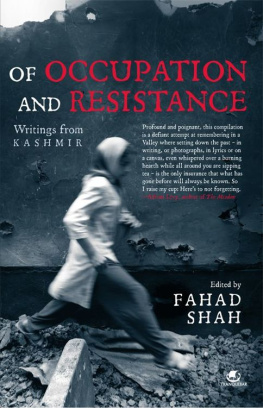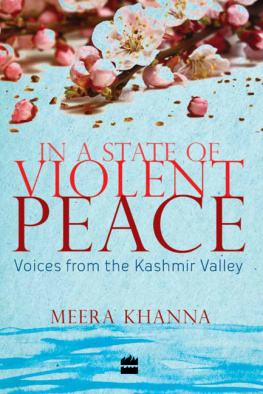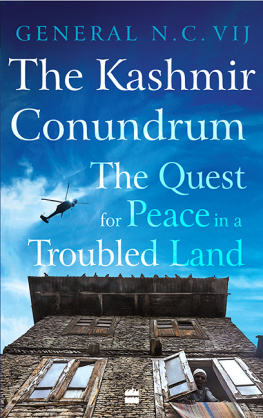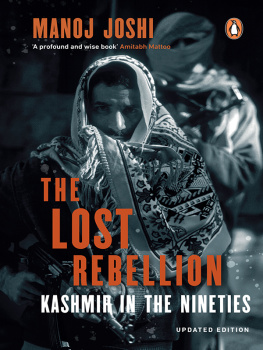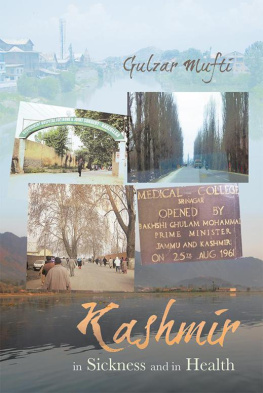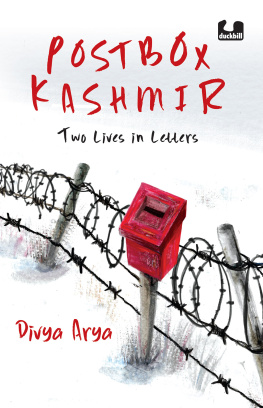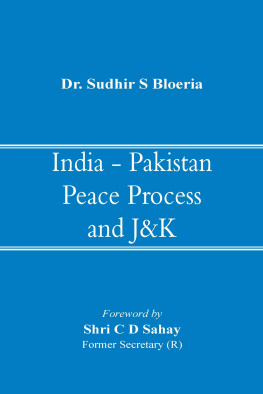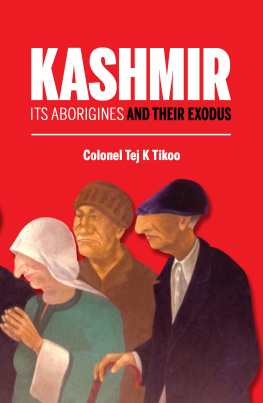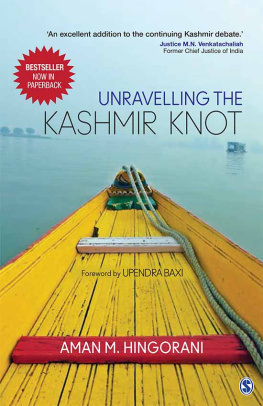TRANQUEBAR PRESS
FAHAD SHAH was born in Kashmir. He studied journalism and worked as reporter, covering the Kashmir conflict. He was selected as a finalist for the Manthan South Asia Award 2011 for his contribution to the profession. He is the founder-editor of The Kashmir walla magazine, which has been described as an insiders storybook of life in Kashmir by Al-Jazeera. Shah has written for various national and international publications including The Christian Science Monitor, First Post, Tehelka, Hardnews and Socialist Worker.
Of Occupation and Resistance:
Writings from Kashmir
Edited by Fahad Shah
Tranquebar Press
An imprint of westland ltd
61, Silverline Building, 2nd floor, Alapakkam Main Road, Maduravoyal, Chennai 600095
No. 38/10 (New No.5), Raghava Nagar, New Timber Yard Layout, Bangalore 560026
93, 1st Floor, Sham Lal Road, New Delhi 110002
First published in India in TRANQUEBAR PRESS by westland ltd 2013
Copyright Fahad Shah 2013
The copyright for the individual stories lies with the respective authors.
All rights reserved
10 9 8 7 6 5 4 3 2 1
Typeset by Ram Das Lal
Printed at Thomson Press (I) Ltd.
Disclaimer
All the statements, views and opinions expressed in the articles comprising Of Occupation and Resistance are those of the individual authors, contributors and/ or the editor only; they do not represent the views and/ or the opinions of the Publisher. The Publisher expressly disclaims any responsibility or liability for such material. The publication of such material does not imply that the Publisher has verified the same and agrees with it.
This book is sold subject to the condition that it shall not by way of trade or otherwise, be lent, resold, hired out, circulated, and no reproduction in any form, in whole or in part (except for brief quotations in critical articles or reviews) may be made without written permission of the publishers.
Contents
The memory of oppressed people is one thing that cannot be taken away, and for such people, with such memories revolt is always an inch below the surface.
Howard Zinn, A Peoples History of the United States:
1492 to Present
Our strategy should be not only to confront empire, but to lay siege to it. To deprive it of oxygen. To shame it. To mock it. With our art, our music, our literature, our stubbornness, our joy, our brilliance, our sheer relentlessness and our ability to tell our own stories. Stories that are different from the ones were being brainwashed to believe.
Arundhati Roy, War Talk
Blood Will Be Avenged: An Introduction

Speak up, for your lips are not sealed
And your words are still your own.
This straight body is yours,
Speak while your soul is still your own.
Faiz Ahmed Faiz
Khoon ka badla June mein lengey. Blood will be avenged in June. This was the slogan resonating in Kashmir in the early months of 2011, after a year of bloodshed.
June 2011 arrived and the Valley was calm, unlike the June of the previous year. The state government claimed that Kashmir was peaceful. It wasnt. On 11 June 2011, on the first death anniversary of a 17-year-old student, Tufail Mattoo, Kashmir was placed under strict curfew. Pro-resistance groups had called for a strike on that day in remembrance of the 2010 victims of the bullets of the police and Indian forces.
Tufail had been killed in 2010 by a tear gas shell fired by a policeman, which broke his skull open and splattered his brains across the playground. His death triggered continuous mass protests followed by civilian killings, one person a day on an average. More than 120 people, mostly school-going teenagers, were killed by bullets, tear gas shells and torture in police stations.
In the 2008 civil uprising, during the mass protests against the Amarnath land row, more than 80 people were killed in a few months. Justice has not been delivered in any of these killings. The civil uprising however was viewed as being successful; 800 kanals of land earlier transferred to the Amarnath Shrine Board were returned to the government, despite protests organised by Hindu right wing groups against the revocation order. The then state government, the CongressPeoples Democratic Party, also had to step down, paving way for governors rule. That is, until subsequent assembly elections in 2008, which brought the National ConferenceCongress government in power under the chief ministership of Omar Abdullah.
The Amarnath land revocation order was celebrated, but the 2008 civil uprising resistance movement had successfully established the shift from the older to the younger generation. It sent a message from Kashmir to the world that the resistance had not died. Instead, the legacy had passed on. At an informal gathering, while discussing the 2008 civil uprising, a former militant commander said, Today we are seeing the beans we sowed giving fruits. It makes us happy that our sacrifices have not failed and the movement is taken over by our youth.
After a certain point of time the revocation of the land transfer order became irrelevant and the streets were filled pushing for larger demands for a secession from India.

Since the 2008 civil uprising, the world has seen the new face of Kashmirs resistance movement. It has taken two decades to reach this point.
In the late 80s, an armed movement was started by passionate groups of youth, following the revolutionary principles of many ideologues of the freedom movement. Maqbool Butt was one of the revolutionaries. Butt was hanged by India in Tihar jail on 11 February 1984. He has been one of the guiding forces ever since. The armed movement continued for years and every day people would be buried; martyrs graveyards were filled; playing fields turned into cemeteries.
In Kashmir, over several decades, people have struggled politically, and through armed uprisings. In the recent past, we have seen a spate of stone throwing by youths as young as 10 years of age, in every corner of the valley. These acts of rebellion have played a significant role in Kashmirs history, but it is a new wave of resistance that has pierced through every wall of oppression protest through music, art, literature and social networking sites. Such forms of dissent have great reach, are viable, attract people and make them curious about the cause. In 2010, a new name was heard everywhere MC Kash, a 22-year-old boy who gave Kashmirs new movement an anthem: I Protest (Remembrance). Within a few weeks his name was in international and Indian newspapers and on television news channels. It was a new development in Kashmirs history of resistance. There had been no resistance rap songs till then. Most of the people didnt know what rap was. MC Kash was accepted with excitement and passion as his voice and words were about loss and standing collectively against the occupation of Kashmir. His music turned viral. Since then MC Kash has released around 20 songs, each explaining a certain chapter in Kashmirs history of struggles. This is a type of resistance through art. Following in his footsteps, many rappers have emerged from Kashmir in the last two years.

